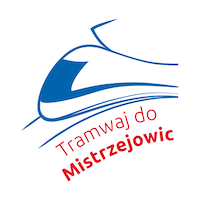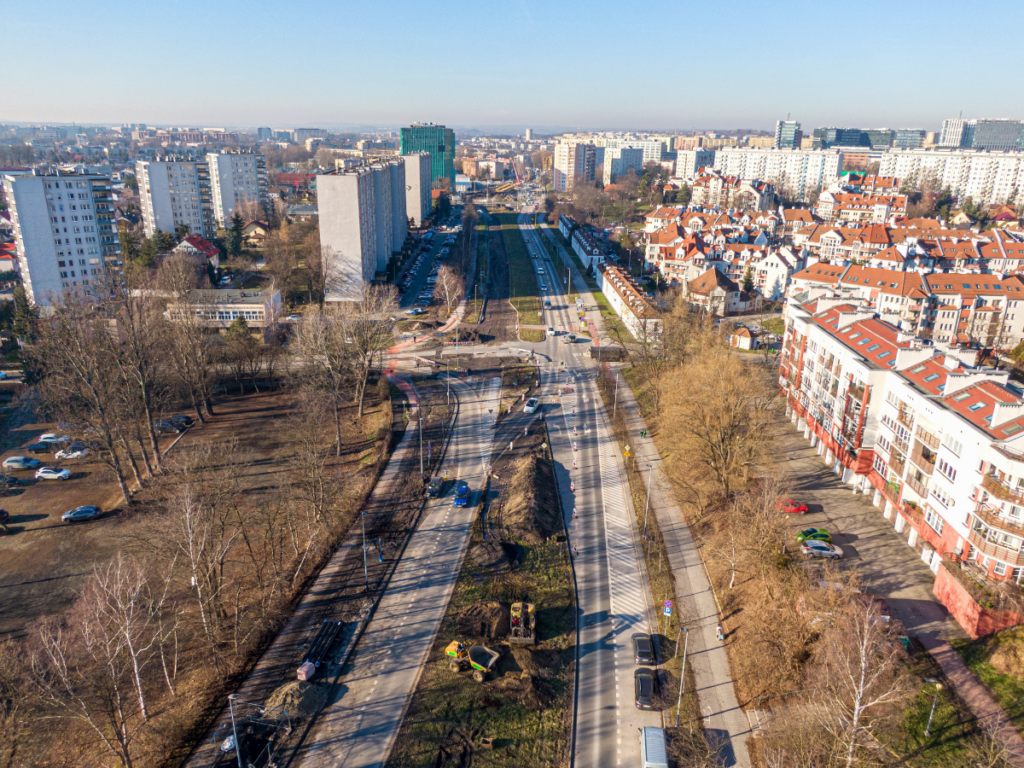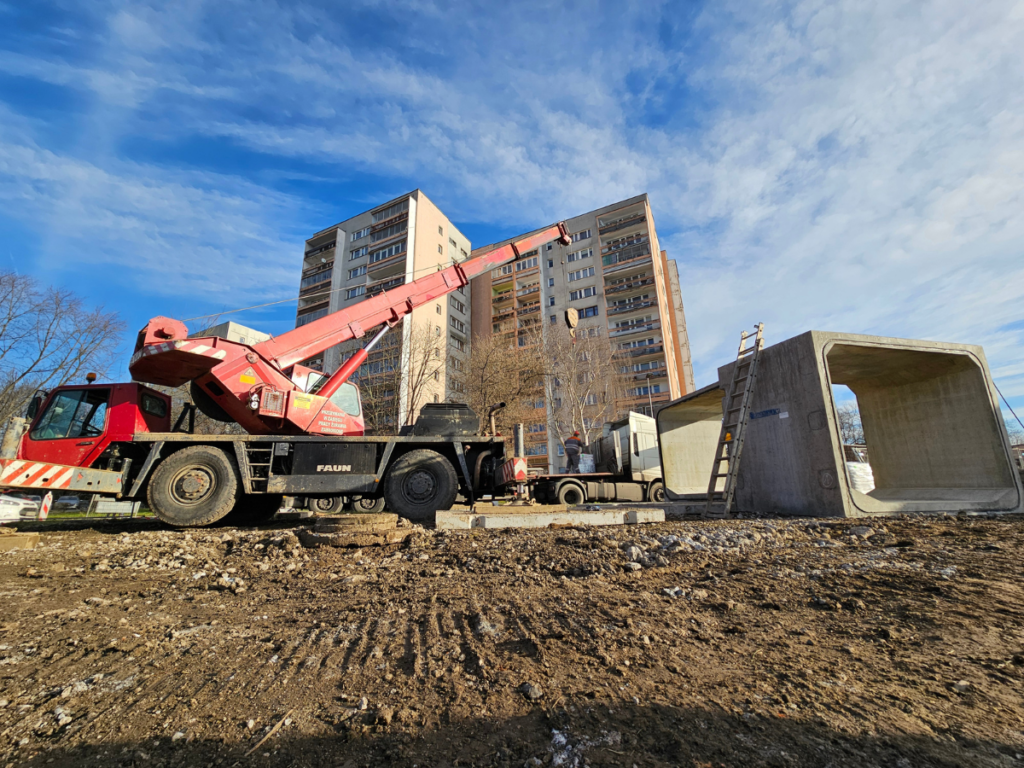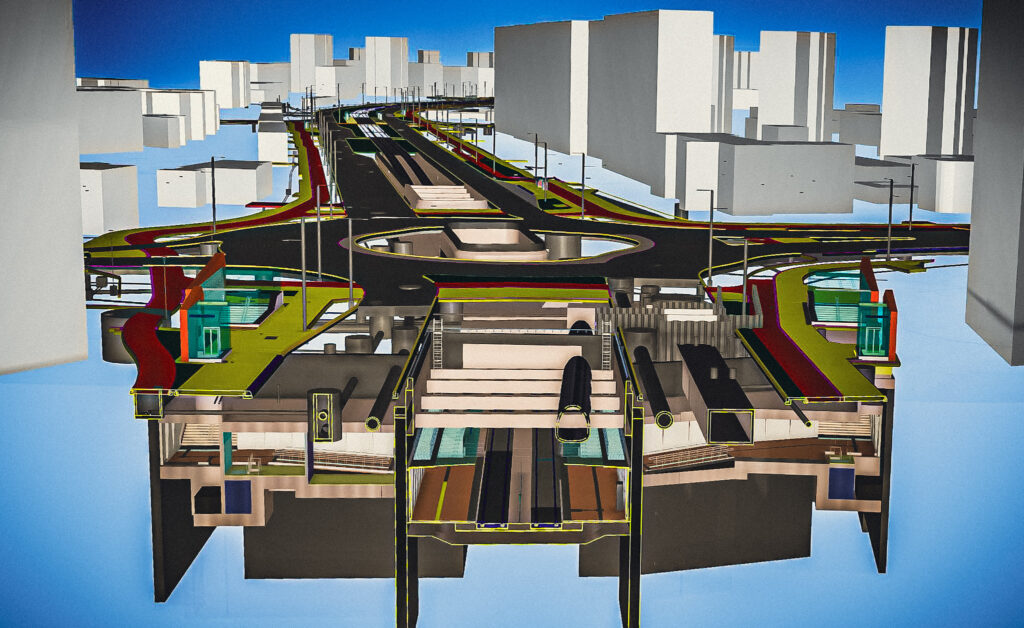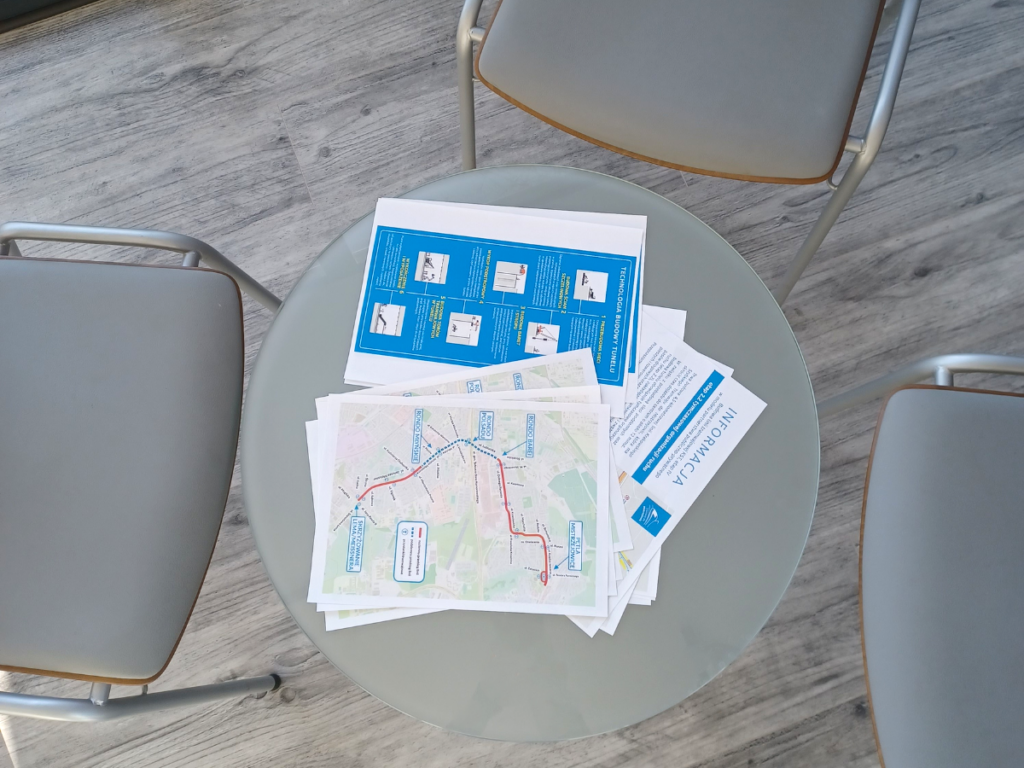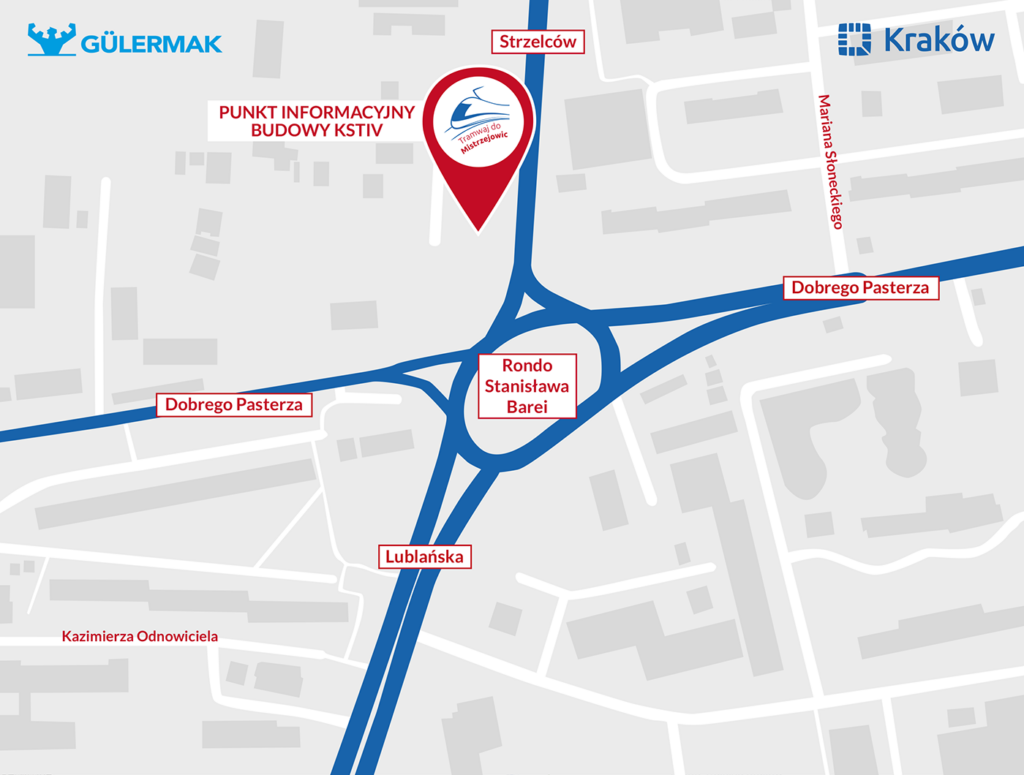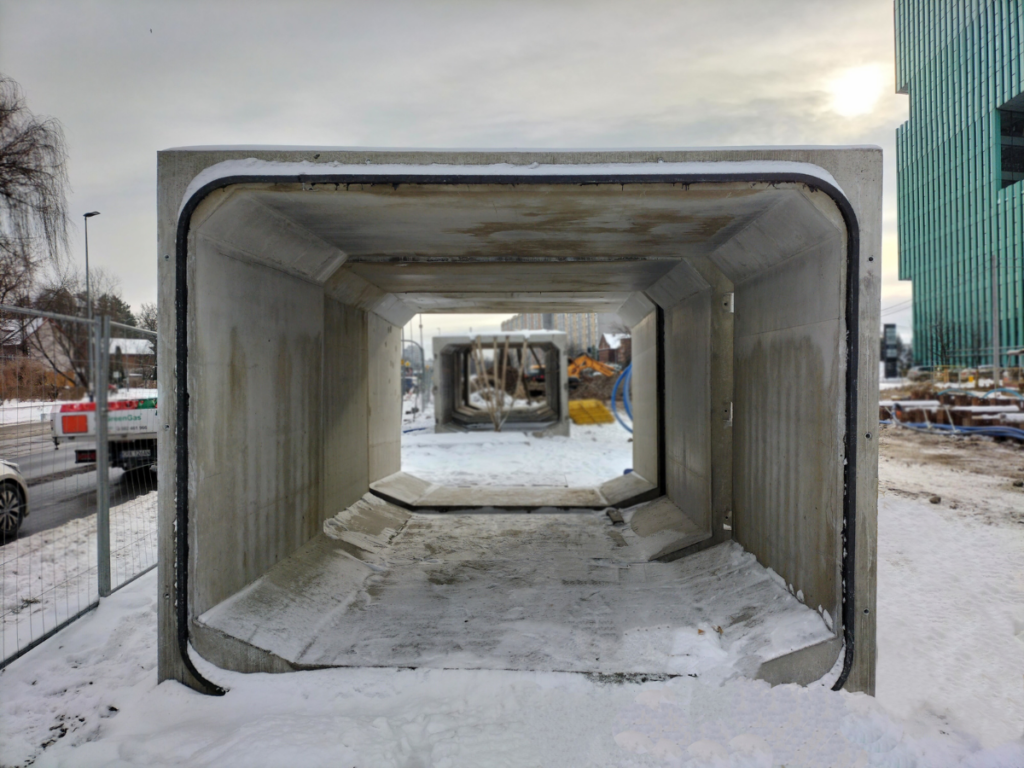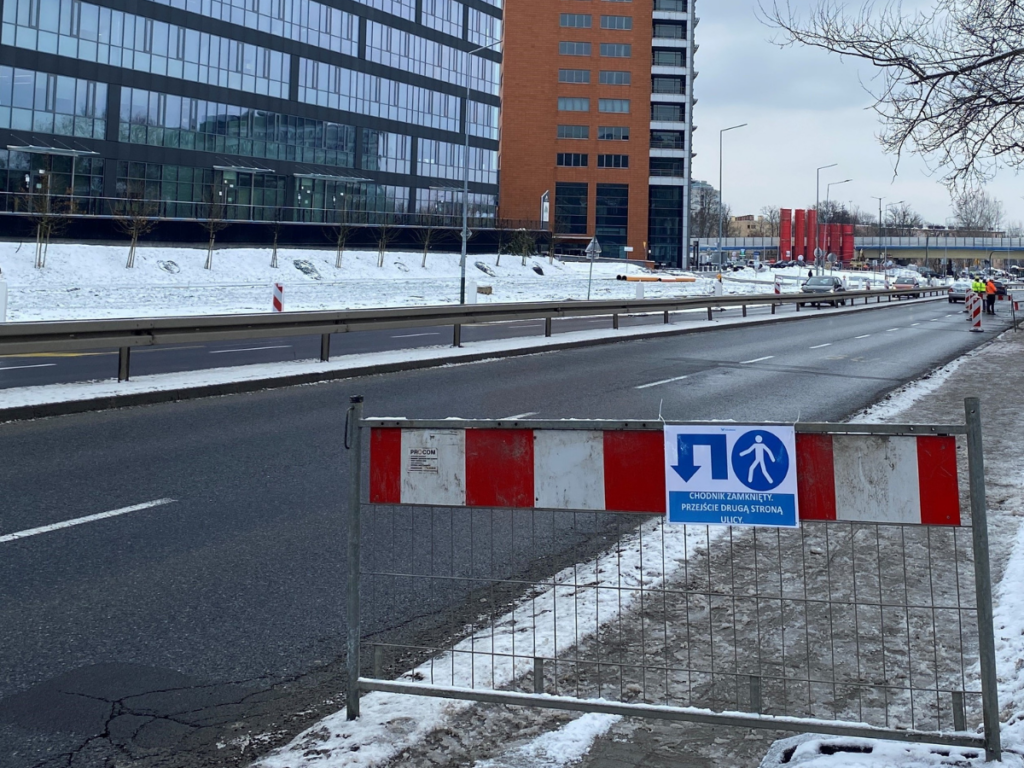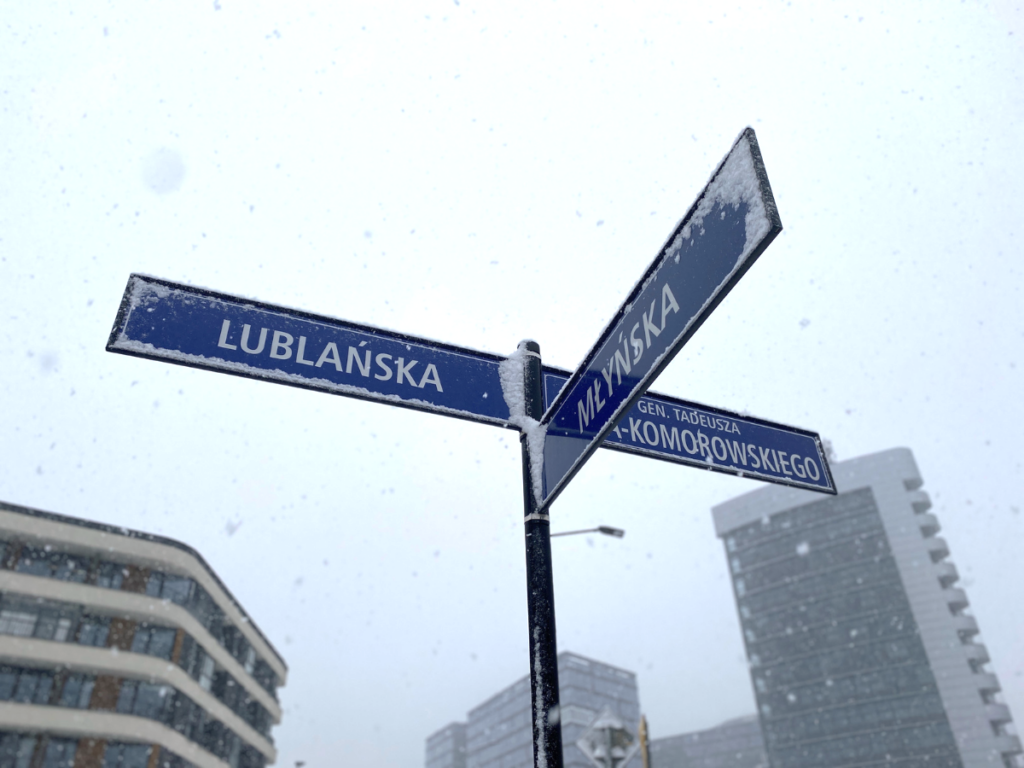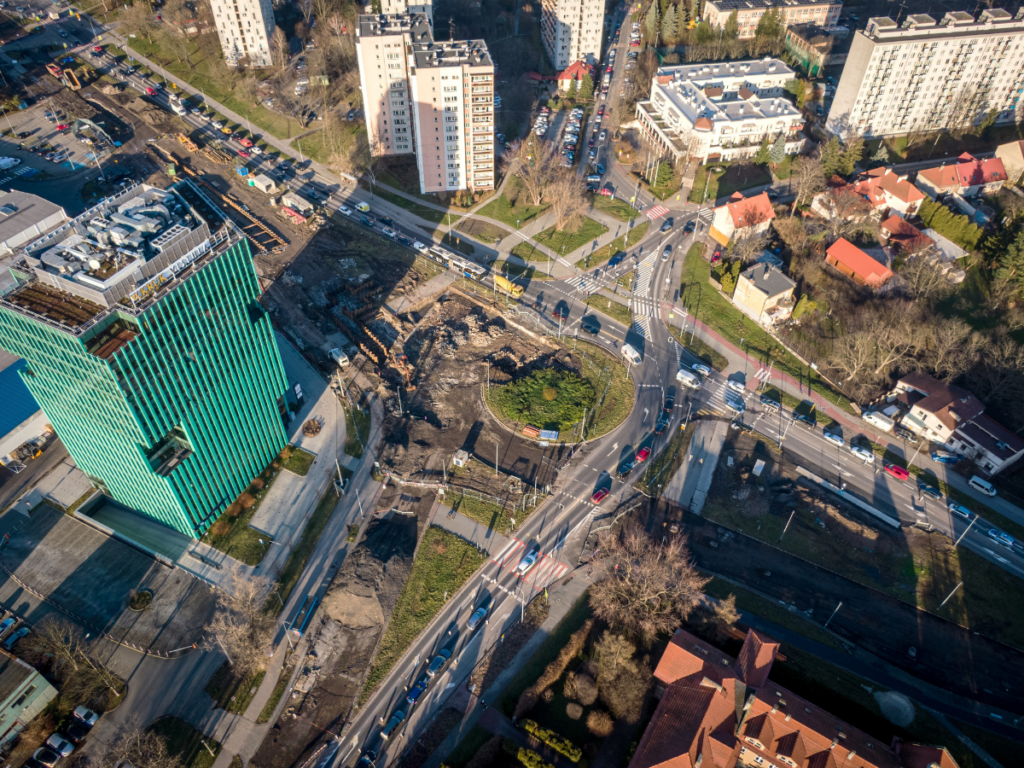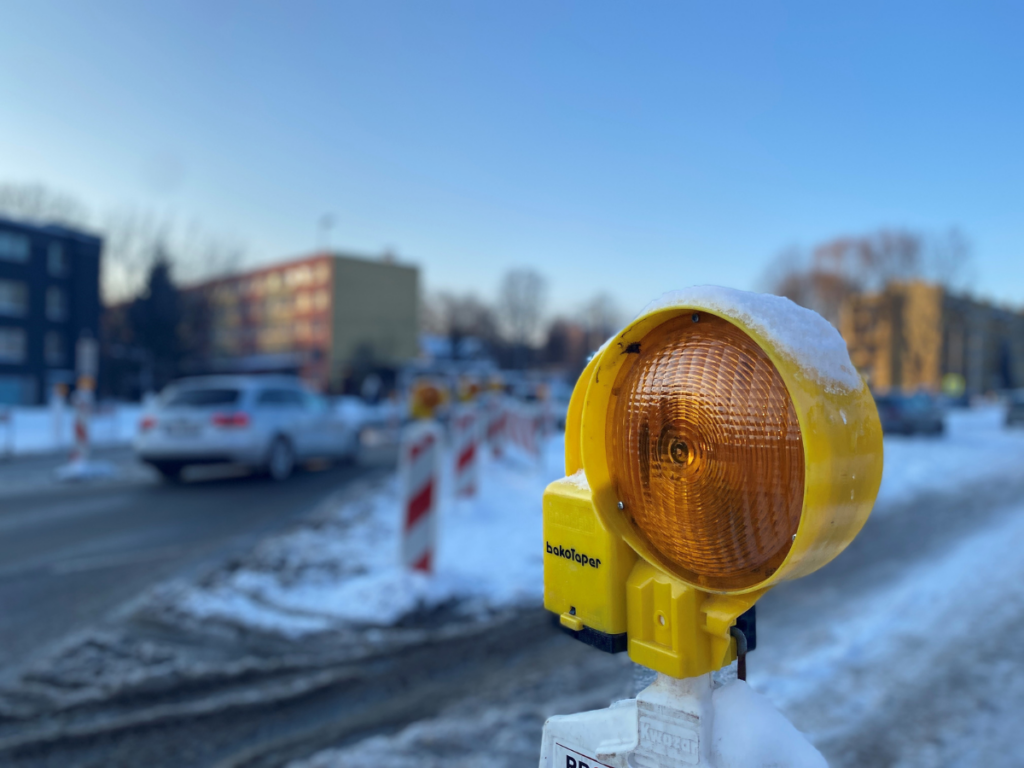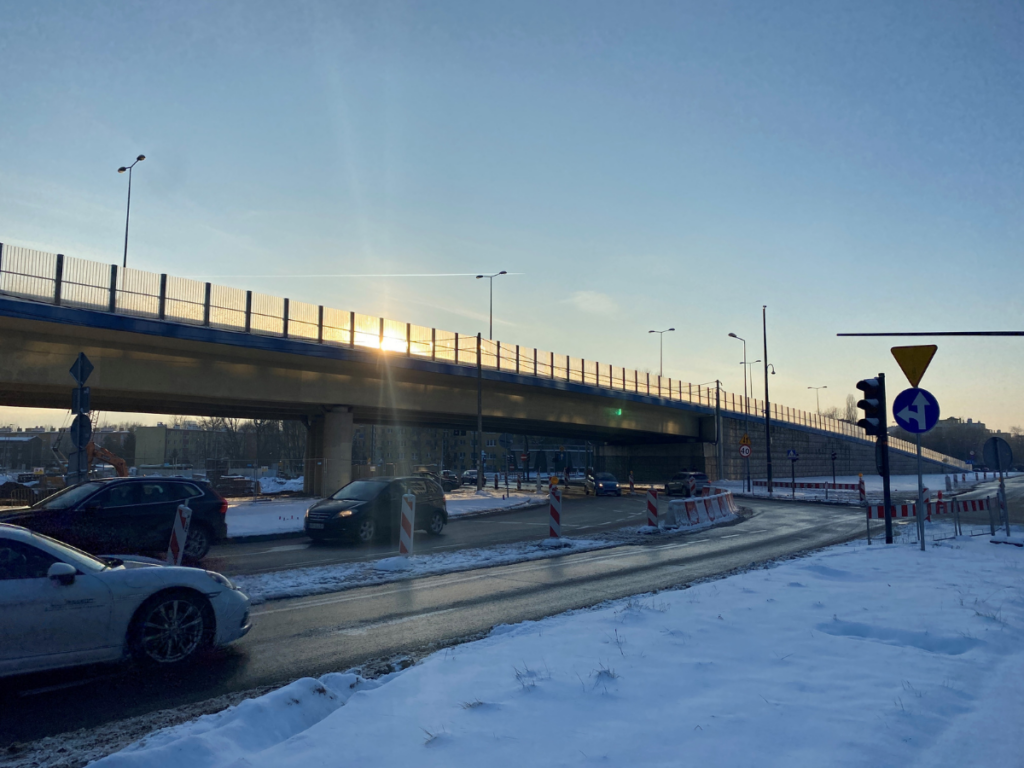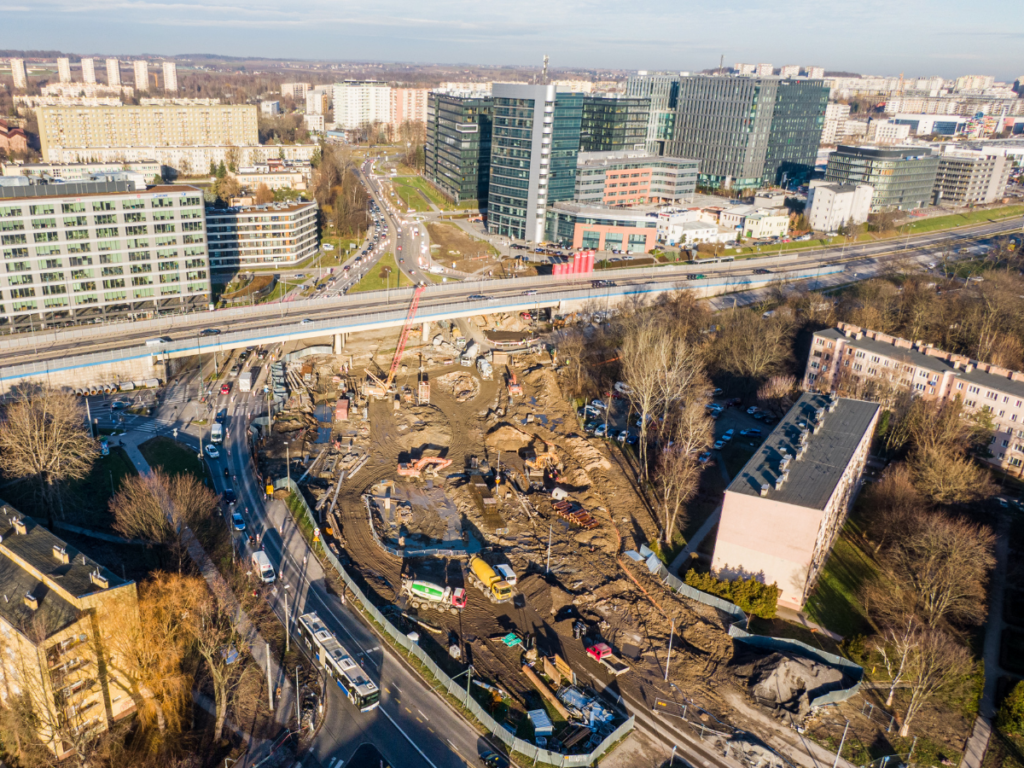We have just ended another month of works on the construction of the tram route to Mistrzejowice. In January, we focused on the construction of the “Polsadu Roundabout” station and the rebuilding of the Sudół Dominikański watercourse. What else have we accomplished?
On January 4 and 18, a Construction Council session was held. It was attended by representatives of the Private Partner and Local Government Entities, including the District Councils of Districts III Prądnik Czerwony and XV Mistrzejowice. Residents also showed up.
Pending their evaluation and approval, in early January, we presented residents with documentation showing the temporary traffic organization (stage 2.3). However, please remember the design is not yet final. It is currently subject to the opinion of ZDMK, ZTP, MPK and the Police and the approval of the City Traffic Engineer. More
Responding to notifications and the needs of drivers, as of 11 January we have modified the current temporary traffic organization. These changes covered a section of Lublańska Street and Bora-Komorowskiego Avenue. More
In mid-January, we received from the Office of the City of Kraków a decision to modify the scope of Change Order no. 4. We could therefore return to implementing the project in the area of Lublańska Street: in accordance with the ZRID decision issued. More
In the second half of the month, we began embedding the first prefabricated elements for the construction of the Sudół Dominikański watercourse. The new canal will be about 400 meters long and will consist of 191 reinforced concrete prefabricated elements. Read more
What’s up in February?
Since the beginning of February, our Information Center has been operating longer. On Mondays we are open from 8 a.m. to 6 p.m. and on other weekdays from 8 a.m. to 5 p.m. You are welcome! More
At the end of February we plan to introduce temporary traffic organization – stage 2.3. On Lublańska Street traffic between Polsadu Roundabout and Barei Roundbaout will be on the western carriageway only: where one traffic lane will be designated for each direction. In addition, vehicle traffic from and to Bora-Komorowskiego Avenue will be redirected to the temporary intersection with Lublańska Street at the height of the exit from Promienistych Street. More
In terms of tunnel construction works, we will continue building the “Polsadu Roundabout” station and begin mobilization of a new bentonite station for geotechnical work at the Młyńskie Roundabout. Additional slurry wall deepening equipment will soon arrive there. We will continue to work on the construction of more technology platforms. We will also begin work under the Iżyckiego Flyover.
We will also continue working on the new channel of the Sudół Dominikański and reconstructing underground networks.
